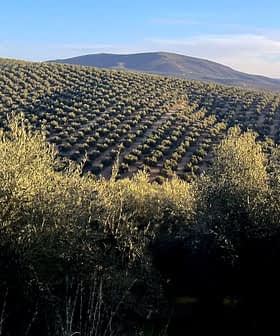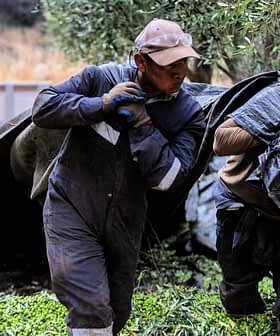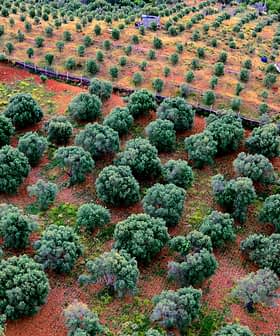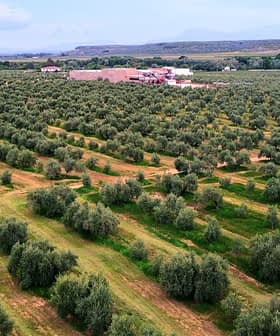Tunisian Producers Anticipate Production Rebound Despite Heat, Drought
Tunisian olive oil production is expected to rebound to 220,000 tons in the 2023/24 crop year, with industry sources optimistic about the upcoming harvest despite challenging weather conditions. The resilience of the country’s main olive varieties, Chemlali and Chetoui, is credited for mitigating the impact of reduced precipitation, although producers are warned about challenges ahead and encouraged to invest in technology and digitalization for better production control and traceability.
State and industry sources suggest Tunisian olive oil production could rebound to 220,000 tons in the 2023/24 crop year.
“The upcoming olive harvest is expected to yield positive results, despite challenging weather conditions and low rainfall,” Abdelaziz Makhloufi, the founder and chief executive of the largest olive oil producer in the country, CHO Group, told Olive Oil Times.
These vigorous, self-fertilizing and drought-resistant olive varieties (Chetoui and Chemlali) play a fundamental role in stabilizing production despite fluctuations in rainfall and water reserves.
Optimism for the new season came from Makhloufi and Wajih Rekik, the chief executives of CHO Group and CHO America, respectively.
“While visiting the groves, we observed firsthand that the prospects for the upcoming olive harvest look promising,” Makhloufi said. “Industry forecasts anticipate total olive oil production in Tunisia of 220,000 metric tons.”
See Also:2023 Harvest UpdatesSuch estimates slightly exceed those recently disclosed by the Ministry of Agriculture, Water Resources and Fisheries. The Directorate General of Agricultural Production expects Tunisian growers to harvest up to 1 million tons of olives and produce 200,000 tons of olive oil.
The different estimates are mostly related to the olive oil yields expected by olive millers, which can vary significantly in the different areas of the country due to climate conditions, soil characteristics and milling technologies.
In some highly significant olive-producing regions, such as Sfax and Gafsa, growers expect a considerable yield. Local authorities expect a lower-than-average harvest in other areas, such as the northern Zaghouan province.
Should such estimates be confirmed, Tunisia’s olive oil production in the 2023/24 crop year would exceed the 180,000 tons produced in 2022/23, finishing close to the five-year average of 228,000 tons.
Industry observers expect such volumes to boost olive oil exports, which have averaged 216,000 tons each year over the past half-decade. The IOC estimates the country’s olive oil consumption at 30,000 tons annually.
According to the National Observatory of Agriculture (Onagri), between August 2022 and August 2023, olive oil export value rose 53 percent. In the same period, olive oil prices skyrocketed 58 percent.
Between November 2022 and August 2023, Onagri estimates that olive oil exports generated almost 3 billion dinars (€900 million) compared with slightly less than 2 billion dinars (€608 million) reported for the 2020/2021 crop year. The value of the country’s olive oil exports helps the country lower its food trade deficit.
Despite the hot and dry summer faced by producers across Tunisia, local companies attributed expectations of a bumper harvest to the resilience of the country’s two main endemic varieties, Chemlali and Chetoui.
“The distinctive characteristics and recognized resilience [of those cultivars] mitigated the impact of reduced precipitation, setting them apart from other varieties and regions,” Makhloufi said.
The company warned of the challenges lying ahead for olive growers in Tunisia. “Even if the olive oil sector continues to be competitive and to play an important economic, social and environmental role, Tunisian olive oil producers face several challenges in the years ahead,” he said.
“Indeed, Tunisian olive oil producers should capitalize on the major asset of the Tunisian olive sector, which is the Chemlali and Chetoui varieties,” Makhloufi added. “These vigorous, self-fertilizing and drought-resistant olive varieties play a fundamental role in stabilizing production despite fluctuations in rainfall and water reserves.”
Indeed, some Tunisian producers are bullish that the extraordinary drought and heat tolerance of these local varieties make the country less susceptible to the impacts of climate change.
“For the variety we commercialize, we aren’t afraid of 40 ºC to 45 ºC temperatures. The Tunisian olive tree can survive in temperatures up to 55 ºC,” Ramzi Lahmar, the chief executive of Mahdia-based Lamar Olive Oil, told Olive Oil Times.
Lahmar noted how the poor harvest anticipated in Spain may also provide new opportunities to Tunisian growers.
“In March, we estimated Tunisian production to be 200,000 tons. Indeed, this increase in temperatures isn’t a problem for us. It’s even an advantage. From this perspective, climate change is helping us,” Lahmar said.
“By December 2023, my company is expected to export 4,000 tons [of olive oil],” he added. “To give you an idea of scale, France produced 3,000 tons last year.”
The significantly different yields reported by Tunisian growers season over season do not surprise Fahd Ben Ameur, marketing manager of Bulla Regia, one of Tunisia’s leading exporters.
“Water scarcity results in significant alternate bearing seasons in Tunisia,” he told Olive Oil Times. “On top of that, we have many old trees and a high percentage of century-old olive trees with low production levels.”
“Tunisian overall production could increase to 300,000 tons, but climate conditions are making it a challenging target,” he added. “Farmers are investing and planting many new olive trees because olive oil is offering them a good source of income. There are varieties such as Koroneiki which are proving highly productive and with a superb chemical and organoleptic profile.”
“As many new orchards are being planted, we can hope for a significant increase in overall production within the next 10 to 20 years,” Ben Ameur continued.
In such a scenario, the CHO Group also warned that focusing on the two traditional and drought-resistant local olive cultivars might not be enough.
“It is essential to invest in technology and digitalization at every stage of production,” Makhloufi said. “Digital solutions enable better control of production variables such as water, temperature and oxygen, which is increasingly used in advanced olive processing.”
“In addition, digitalization also concerns guaranteeing the traceability of Tunisian oils via the blockchain to counter fraud and give consumers confidence in product quality,” he concluded.
CHO Group, which accounts for 20 percent of Tunisian olive oil exports, will begin harvesting during the last week of October.









